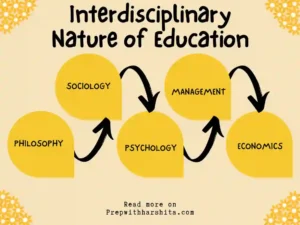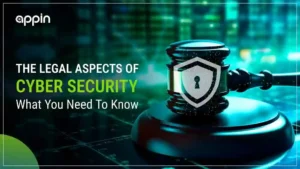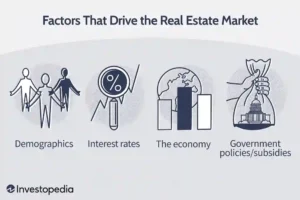The Future of AI and Its Impact on Education Systems

- It’s that thing we talk about all the time now. You’ve probably heard all the big ideas: robots replacing teachers, textbooks gone digital, classrooms full of virtual tutors. But here’s the thing—AI in education isn’t just about flashy new gadgets and tools. It’s about rethinking how we teach and learn. What does that actually look like for education systems? Well, grab a coffee—this is gonna be a wild ride.
New Beginnings for Education Systems
Education systems have been around for ages, and yeah, they’re starting to show their age. I mean, how long has the classroom setup been: a teacher talking at the front, rows of desks, the occasional pop quiz? Sure, things have evolved (hello, smartboards!), but the core structure has been pretty much the same for decades. Enter AI. It’s like that friend who always has crazy ideas—like turning your old Ford Focus into a camper van. Too far? Maybe. But AI in education systems is a game-changer.
So here’s the kicker: AI doesn’t just improve what we have—it could totally flip the whole system upside down. I mean, personalized learning? Automation of boring tasks? Real-time feedback? That’s not science fiction, y’all. That’s coming, and it’s already happening in bits and pieces across the world.
Personalized Learning: The Dream Come True?
Alright, let’s start with the thing everyone’s talking about: personalized learning. Honestly? It’s like the unicorn of education systems. If AI can do what it promises, every student will get their own tailored learning path, no more one-size-fits-all. I remember when I was in school, I would’ve given anything for a lesson plan that didn’t make me want to gouge my eyes out (sorry, history teacher, but those 8-hour lectures on medieval farming were… brutal).
AI is setting up systems to do exactly that—create learning experiences for each student based on their strengths, weaknesses, and, honestly, how fast they can read. Adaptive Learning Platforms, like DreamBox Learning and Knewton, use fancy algorithms to track your progress and switch things up when you need it. You get stuck? The AI knows and serves you up something easier (because it knows you’ve been staring at the same problem for 45 minutes).
Real-time feedback? Oh, it’s coming. I spent half my life waiting for a teacher to grade an assignment. (Remember waiting for weeks for that history paper to come back? Felt like I was waiting for my Spotify playlist to load on dial-up). But AI? It’s like a robot teacher who never sleeps, constantly updating grades and giving feedback in real-time. For students, that means faster learning. For teachers? It means less time spent on paperwork and more time spent actually teaching.
Getting Rid of Tedious Tasks in Education Systems
I’m not gonna lie—grading? It’s the worst. Teachers know it. I know it. Everyone knows it. It’s like that one chore you try to avoid by pretending you’re “too busy” but then you end up binge-watching reruns of The Office. So, what’s AI got for this? Automation. Hallelujah!
Imagine being a teacher and having an AI tool that grades everything for you—quizzes, essays, whatever. Sounds like a dream, right? AI-powered platforms like Gradescope do this already. You don’t have to worry about the messy stack of papers on your desk that smells faintly of coffee and stress. You can actually focus on the teaching part, while the AI handles the “busywork.”
And for attendance? We’re talking full-on face recognition. Now, I know what you’re thinking, “Wait, are they turning my classroom into Big Brother?” Sort of. But in a good way. AI tech can track who’s there, who’s late, and even remind you of those students who’ve been ditching your class a little too often. No more counting heads or hunting down a paper attendance sheet you’ve lost somewhere between your lunch and the fire drill.
Data. Loads of It.
AI isn’t just playing around—it’s taking all that data teachers gather on students and using it to make better decisions. For example, let’s say a teacher needs to figure out who’s struggling in the class. In the past, that meant grading, pulling up reports, and praying for an epiphany. Now? AI’s got it covered. It can analyze trends in student performance and predict who might need extra help before they even fail that midterm.
My neighbor Tina swears her kale patch cured her Zoom fatigue—and she’s not wrong. I guess the same applies here: AI’s ability to predict and adjust based on data could work wonders in education systems. It could identify patterns in how kids learn and what they struggle with. It’s like having a magic mirror for teaching that tells you exactly where the problem areas are.
Virtual Learning Assistants: The Teachers of Tomorrow
I don’t know about you, but I remember trying to study late at night and feeling like a zombie. My brain was like, “Nope, this is not happening.” But here’s the thing: virtual assistants powered by AI don’t get tired. They don’t need coffee breaks. They’re here to stay.
So imagine an AI assistant who helps students outside the classroom. You could ask it a question about algebra at 2 AM (not that I’ve ever done that after procrastinating until the last minute) and boom—it gives you a step-by-step breakdown. If you’re a night owl—or a procrastinator—this could be the thing that gets you through the semester.
Plus, these virtual assistants can help with learning in multiple languages. I once tried to learn Spanish through an app, but let’s just say I wasn’t quite ready for “Hola” by the time the semester ended. Virtual assistants could be a game-changer for global education systems, making it easier for students from different countries and backgrounds to access learning.
But Hold Up: What About the Dark Side?
Fast forward past three failed attempts at online learning, and here’s where it gets a bit tricky. AI might be a rockstar in the classroom, but it’s not perfect. I’ve gotta be real—there are some massive concerns when it comes to how this tech gets used. It’s a double-edged sword, right? I mean, we’re talking about data. A lot of it. And not just any data—student data.
My first herb garden died faster than my 2020 sourdough starter—RIP, Gary. But I learned some important things. If we’re not careful, AI could turn into a garden where personal data gets picked and harvested without any oversight. Yikes. It’s one of those “do we trust the system?” questions that education systems need to answer.
Another thing? AI can be biased. Seriously. If it’s fed bad data—like, say, some outdated test scores or unbalanced inputs—it can make the wrong call. It’s like having a GPS that tells you to take a left turn… straight into a lake. Not good.
What’s Next for Education Systems?
So here we are, at the crossroads of AI and education. What’s next? Well, the future is looking pretty bright—if we play it right. AI could completely transform how education systems work, making it more personalized, efficient, and accessible.
Imagine a world where a teacher is part-time teacher, part-time tech genius, with AI doing all the heavy lifting. They could focus on the really important stuff: connecting with students, motivating them, helping them find their passion for learning. AI doesn’t take away from the human touch—it enhances it.
Fun fact: Victorians believed talking to ferns prevented madness. I talk to my begonias just in case. Anyway, AI could be that weird little helper that prevents the madness of overcrowded classrooms and outdated methods.
Final Thoughts (and a Little Hope)
Look, AI in education systems isn’t all sunshine and rainbows. It’s gonna take time to figure out the kinks, like how to handle privacy or fairness issues. But here’s the thing: I think AI could be the thing that finally gives education the upgrade it needs. No more boring lessons. No more waiting forever for grades. AI could just be the thing that brings learning into the 21st century—and beyond.
Just like Pete’s Hardware on 5th Ave gave me that cracked watering can that survived my overwatering phase, AI could survive the growing pains in education systems. And maybe, just maybe, it’ll make a big difference.







